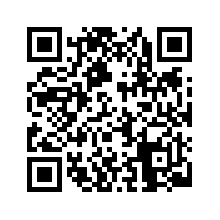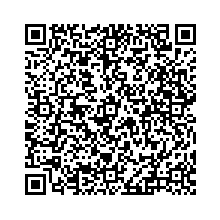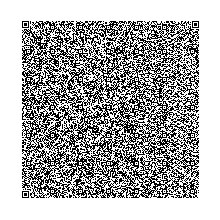A virus is are caracterized because of causing different types of errors and damages in the computer.
Now, I´m going to explain you the top 5 of the worst viruses in the history:
1- My Doom: My Doom explored its way to the malware world on 26th January 2004 and sent a shockwavearound the world as it scattered exponentially via e-mail with random servers´addresses and subject lines. It is also knows as Novarg.
2- Iloveyou: back in 2000, is one of the trickiest computer malware ever was detected on May 4 in Philippines. The virus was transmitted via e-mail having a subject line "ILOVEYOU". As soon as it was open the virus send it to the first 50 contacts on Windows.
3- Sobig F: August 2003 turned out to be the miserable month for corporate and domestic computer operators around the world as the six and most destructive deviant of Sobig series hit the Internet. Sobig F infected host computer by fooling the users that the corrupt e-mail they receive is from a legimitate source. If the user opens the attachment it exposes a security hole in the system allowing the intruder to send messages via the trapped user´s e.mail address.
4- Code red: in 2001, acomputer worm was unleashedon the networks server. The interesting thing about this, was that you needn´t have to open the the -mail attachment. It only needs an active internet connection with which it defaces the webpage you open and display a text string "Hacked by Chinese!"
5.- SQL Slammer: it appeared in 2003. It mainly targeted on the servers by generating random Ip addresses and discharging the worm to those Ip addresses. The abrupt release of infected network packets had huge impact on the significant services provided by Bank of America´s ATMs, Seattle´s 911 emergency response systems and Continental airlines.
The first computer viruses:
- Elk Cloner was the first personal computer virus to appear outside the single computer or lab where it was created. It attached itself to the Apple DOS 3.3 operating system and spread via floppy disk.
- Brain: created in 1986 in Pakistan, reportedly to detect piracy of the software that was written.
- WinVir: it was discovered in 1992. The virus didn´t contain any Windows API calls, instead relying on DOS interrups.
- VLAD Virus: created by Australian hackers in 1996, it was the first virus to target Windows 95.
- Win32.Cabanas: In 1997, this encrypted, memory- resident stealth virus was the first that targeted Windows NT.
Latest viruses:
Zeus: it´s a Trojan that steals bank accounts. The users are infected by spam ads that offer discount merchandise, counterfeit clothing design or some similar scams that are on the social network Facebook.
MiniDuke: it´s a Trojan that exploits a vulnerability found in Adobe applications since late 2012. The computers are infected by dowloading a PDF that contains information about Human Rights.
Shamoon: Shamoon is a new virus that deletes the contents of the computer and doesn´t allow the same restarts, it´s propagated through e-mails into an executable file, removable drives and share networks.
SabPub: it explodes a vulnerability in Java to infect their victims. It´s distributed by using a Word document that take advantege of the CVE-2009- 0563 vulnerability in Office for Mac.
Win32/Dorkbot: it´s spread through messages on Facebook chats and Windows Live Messenger.
Sergio Friginal Blog
Translate
martes, 13 de mayo de 2014
miércoles, 16 de abril de 2014
Security in the Internet
It´s information security as applied to computers and computers networks. Thne field covers all the processes and mechanisms by which computer-based equipment, information and services are protected from unintended or unauthorized access, change or destruction. Computer security also includes protection from unplanned events and natural disasters.

Computer protection: there are numerous ways to protect computers, including utilizing security-aware design techniques, building on secure operating systems and installing hardware devices designing to protect the computer systems.
- Security and systems design: although there are many aspects to take into consideration when designing a computer system, security can prove to be very important. Many organizations are improving security and many types of ciber-criminals are finding ways to continue their activities. Every type of ciber attack is on the rise.
- Security measures: a state of computer sucurity is the conceptual ideal, attained by the use of three processes: threat prevention, detection and response. These processes are based on various policies and system components, which includes the following:
. User account access controls and cryptography can protect systems, fails and data.
. Firewalls are by far the most common prevention systems for a network security perspective as they can shield access to internal network services, and block certain kinds of attacks through packet filtering.
. Intrusion Detection Systems are design to detect network attacks in progress and assist in post-attacks forensics, while audic trails and logs serve a similar function for individual systems.
. Response is necessarily designed by the assessed security requirements of an individual system and may cover the range from simple upgrades of protections to notification of legal authorities, counter attacks, and the like.

martes, 15 de abril de 2014
What is a Social Network?
A Social Network is a social structure made up of a set of social actors and a set of the dyadic ties between this actors. It perspective provides a set of methods for analyzing the structure of wholea va social entities as well as a variety of theories explaining the patterns observed in these structures.
In the late 1800´s, Émile Durkheim and Ferninand Tönnies foreshadowed the idea of social networks in their theories and research of social groups. Tönnies argued that social groups can exist as personal and direct ties that eather link individual who share values and belief or impersonal, formal and instrumental social links. Durkhaim gave a non-individualistic explanation of social facts, arguing that social phenomena arise when interacting individuals constitute a reality that can no longer be accounted for in terms of the properties of individual actors.
George Simmel, writing at the turn of the twentieth century, pointed to the nature of networks and the effects of network size on interaction and examined the likelihood of interaction in loosely knit networks rather than groups.
In the 1930´s Jacob. L Moreno began systematic recording and analysis of social interaction in small groups, specially classrooms and work groups.
In anthropology, the foundation for social network theory is the theorical and ethnographic work of Bronislaw Malinowsky, Alfred Radcliffe- Brown and Claude Lévi-Strauss. Max Gluckman, John A. Barnes, J. Clide Mitchell and Elizabeth Bott Spillius performed one of the first fieldworks from which network analysis were performed, investigating community networks in southern Africa, India and the United Kingdom.
In sociology, Talcott Parsons set the stage for taking a relational approach to understanding social structure. Peter Blau provides a strong impetus for analizying the relational ties of social units with his work on social exchange thheory.
Mark Granovetter and Barry Wellman are among the former former student who elaborated and championed the analysis of social networks.
Micro leves of social networks:
- Dyadic level: a dyad is a social relationship between two individual. Network research on dyads may concentrate on structure of the relationship, social equality and tendencies towards reciprocity/mutuality.
- Tryadic level: research at this level may concentrate on factors such as a balance and transitivity.
- Actor level: the smallest unit of analysis in a social network is an individual in their social setting. This level focuses on social characteristics such as size, strenght, density...
- Subset level: research problems begin at the micro-level such as distance and reachability, cliques...
In the late 1800´s, Émile Durkheim and Ferninand Tönnies foreshadowed the idea of social networks in their theories and research of social groups. Tönnies argued that social groups can exist as personal and direct ties that eather link individual who share values and belief or impersonal, formal and instrumental social links. Durkhaim gave a non-individualistic explanation of social facts, arguing that social phenomena arise when interacting individuals constitute a reality that can no longer be accounted for in terms of the properties of individual actors.
George Simmel, writing at the turn of the twentieth century, pointed to the nature of networks and the effects of network size on interaction and examined the likelihood of interaction in loosely knit networks rather than groups.
In the 1930´s Jacob. L Moreno began systematic recording and analysis of social interaction in small groups, specially classrooms and work groups.
In anthropology, the foundation for social network theory is the theorical and ethnographic work of Bronislaw Malinowsky, Alfred Radcliffe- Brown and Claude Lévi-Strauss. Max Gluckman, John A. Barnes, J. Clide Mitchell and Elizabeth Bott Spillius performed one of the first fieldworks from which network analysis were performed, investigating community networks in southern Africa, India and the United Kingdom.
In sociology, Talcott Parsons set the stage for taking a relational approach to understanding social structure. Peter Blau provides a strong impetus for analizying the relational ties of social units with his work on social exchange thheory.
Mark Granovetter and Barry Wellman are among the former former student who elaborated and championed the analysis of social networks.
Micro leves of social networks:
- Dyadic level: a dyad is a social relationship between two individual. Network research on dyads may concentrate on structure of the relationship, social equality and tendencies towards reciprocity/mutuality.
- Tryadic level: research at this level may concentrate on factors such as a balance and transitivity.
- Actor level: the smallest unit of analysis in a social network is an individual in their social setting. This level focuses on social characteristics such as size, strenght, density...
- Subset level: research problems begin at the micro-level such as distance and reachability, cliques...
What is Prezi?
Prezi is a cloud-based presentation software and storytelling tool for presenting ideas on a virtual canvas.
Prezi was created by the support of Kitchen Budapest and Magyar Telekom in 2008 in order to replace the ordinary slade based presentations. The actual development was done by Zui Labs led by its three Hungarian founders Péter Árvai, Szabolcs Somlai-Fischer and Péter Halácsy. The word prezi is hungarian short form of presentation.
Products and features:
- Prezi ZUI: the Prezi online and offline Zui editors employ a common tool palette, allowing users to pan and zoom, and to size, rotate, or edit an object. The users places objects on a canvas and navigates between videos, images, texts and other presentation of media.
- Prezi Desktop: it allows Prezi Pro or Edu Pro suscribers to work off-line, create and save their presentations on their own Windows or Mac (but not Linux) systems.
- Prezi Collaborate: it´s an online collaboration feature that allows up to ten people to co-edit and show their presentation on real time.Users participate in a Prezi simultaneously, and each is visually represented in a presentation window by a small avatar.
- Prezi viewer for iPad: it´s an app developed for an iPad for viewing prezis created in one´s Prezi online account.
Revenue model
Users who use the product´Public license must public their work on the prezi.com website, which is publicly viewable. Customers who pay for PreziEnjoy or PreziPro can make their presentations privately.
Prezi is uses for businness, conferences, educations and information visualization.
And for last, I have done one work of Prezi if you want to see it, it´s in:
http://prezi.com/9zjwfkenlh8d/?utm_campaign=share&utm_medium=copy
Prezi was created by the support of Kitchen Budapest and Magyar Telekom in 2008 in order to replace the ordinary slade based presentations. The actual development was done by Zui Labs led by its three Hungarian founders Péter Árvai, Szabolcs Somlai-Fischer and Péter Halácsy. The word prezi is hungarian short form of presentation.
Products and features:
- Prezi ZUI: the Prezi online and offline Zui editors employ a common tool palette, allowing users to pan and zoom, and to size, rotate, or edit an object. The users places objects on a canvas and navigates between videos, images, texts and other presentation of media.
- Prezi Desktop: it allows Prezi Pro or Edu Pro suscribers to work off-line, create and save their presentations on their own Windows or Mac (but not Linux) systems.
- Prezi Collaborate: it´s an online collaboration feature that allows up to ten people to co-edit and show their presentation on real time.Users participate in a Prezi simultaneously, and each is visually represented in a presentation window by a small avatar.
- Prezi viewer for iPad: it´s an app developed for an iPad for viewing prezis created in one´s Prezi online account.
Revenue model
Users who use the product´Public license must public their work on the prezi.com website, which is publicly viewable. Customers who pay for PreziEnjoy or PreziPro can make their presentations privately.
Prezi is uses for businness, conferences, educations and information visualization.
And for last, I have done one work of Prezi if you want to see it, it´s in:
http://prezi.com/9zjwfkenlh8d/?utm_campaign=share&utm_medium=copy
viernes, 21 de marzo de 2014
What is GIMP?
GIMP
GIMP( GNU Image Manipulation Program) is araster graphics editor used for image retouching and editing, free form drawing, resizing, cropping, photo-montages, converting between differents image formats, and more specialized tasks. Developers and mainteiners of GIMP strive to create a high-end app for creating and editing original images, photos, icons, graphical elements of web pages, and art for graphical user interface elements.
GIMP was create by Spencer Kimball and Peter Mattis. GIMP development began in 1995 as a semester long-project at the university in California. The first publication was in 1996.
GIMP is developed by a self-organized group of volunteers under the banner of the GNOME Project.
GIMP( GNU Image Manipulation Program) is araster graphics editor used for image retouching and editing, free form drawing, resizing, cropping, photo-montages, converting between differents image formats, and more specialized tasks. Developers and mainteiners of GIMP strive to create a high-end app for creating and editing original images, photos, icons, graphical elements of web pages, and art for graphical user interface elements.
GIMP was create by Spencer Kimball and Peter Mattis. GIMP development began in 1995 as a semester long-project at the university in California. The first publication was in 1996.
GIMP is developed by a self-organized group of volunteers under the banner of the GNOME Project.
jueves, 30 de enero de 2014
Wireless networks
Last week, we did an exam of networks, but I can´t explain all about them, so I´m going to explain the wireless networks.
First, a wireless network is any type of computer network that uses wireless data connections for connecting network nodes.
Wireless networking it´s a method by which homes, telecommunications networks and enterprise intallations avoid the costly process of introducing cables into a building, or as a connection between various equipment locations.
There are different types of wireless networks:
- Wireless PAN: it is wireless personal area network (WPAN´s) interconnect devices within a relatively small area, that is generally within a person´s reach.
- Wireless WAN: a wireless local area network (WLAN) links two or more devices over a short distance using a wireless distribution method, usually providing a connection through an access point for Internet access.
- Wireless mesh network: it´s a wireless networkmade up of radio nodes organized in a mesh topology.
-Wireless MAN: wireless metropolitan area networt is a type of wireless network that connects several wireless LAN´s.
-Wireless WAN: wireless wide area network typically cover large areas, such us between neighboring, towns and cities.
-Cellular network: it´s a radio network distributed over land areas called cells, each served by at least one fixed-location transceiver, know as a cell site or base station.
-Global area network: it´s a network using for supporting mobiles across an arbitrary number of wireless LAN´s, satellite coverage areas,etc.
-Space network: it´s a network used for communication between spacecraft, usually in the vicinity of the Earth.
· Properties:
-General: in a general sense, wireless networks offer a vast variety of uses by both business and home users.
-Performance. each standard varies in a geographical range, thus making one standard more ideal that the next depending on what it´s one is trying to accomplish with a wireless network.
-Space: wireless networks offer many different advanteges when it comes to to difficult-to-wire areas trying to communicate such as across a street or river, a warehouse on the other side of the premise or buildings that are physically separated but operate as one.
- Home: wireless technology is an effective option compared to ethernet for sharing printers, scanners, and high speed internet connections.
.Difficulties: there are some problems like:
- Interferences: compared to wired systems, wireless networks are frequently subject to electromagnetic interference.
- Absorption and reflection: some materials cause absorption of electromagnetic waves, preventing it from reaching the receiver.
- Multipath fading: in multipath fading two or more different routes taken by the signal, due to reflections, can cause the signal to cancel out at certain locations, and to be stronger in other cases.
- Hidden nodes problems: it occurs in some types of networks when a node is visible from a wireless access point (AP), but not from other nodes communicating with that AP.
- Interferences: compared to wired systems, wireless networks are frequently subject to electromagnetic interference.
- Absorption and reflection: some materials cause absorption of electromagnetic waves, preventing it from reaching the receiver.
- Multipath fading: in multipath fading two or more different routes taken by the signal, due to reflections, can cause the signal to cancel out at certain locations, and to be stronger in other cases.
- Hidden nodes problems: it occurs in some types of networks when a node is visible from a wireless access point (AP), but not from other nodes communicating with that AP.
viernes, 27 de diciembre de 2013
Who are QR Codes?
QR Codes are the trademark for a type of matrix barcode first designed for the automotive industry in Japan.
The QR code has became popular outside automotive industry due to its fast readability and greater storage capacity compared to standard UPC barcodes.
Storage: the amount of data that can be stored in the QR code symbol depends on the datatype and on the error conection level. The maximum storage capacities occur for 40-L symbols.
Here are some examples of QR code:




Uses: originally designed for industrial uses, QR codes have become common in consumer advertising. Typically, a smartphone is used as a QR-code scanner, displaying the code and converting it to some useful form.
The QR code has became popular outside automotive industry due to its fast readability and greater storage capacity compared to standard UPC barcodes.
Storage: the amount of data that can be stored in the QR code symbol depends on the datatype and on the error conection level. The maximum storage capacities occur for 40-L symbols.
Here are some examples of QR code:




Uses: originally designed for industrial uses, QR codes have become common in consumer advertising. Typically, a smartphone is used as a QR-code scanner, displaying the code and converting it to some useful form.
Suscribirse a:
Entradas (Atom)




